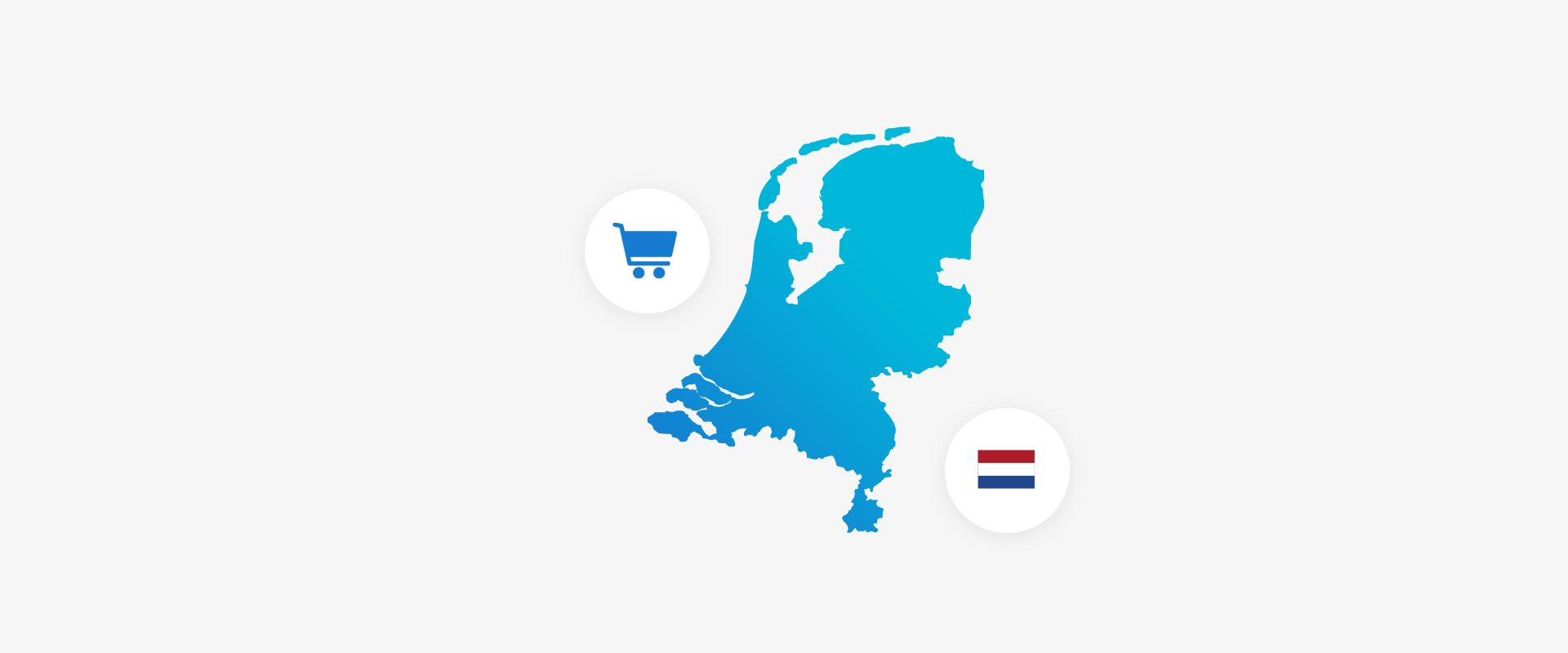
The Dutch e-commerce economy is a domestic empire that performs comfortably by keeping commerce close to home.
Home to just 17 million people, the Netherlands still manages to make a sizable name for itself; drawing light to European payment methods and exactly why global merchants need to diversify their payments portfolio.
So, as part of our e-commerce series, let’s take a deeper look at e-commerce in the Netherlands.
With 96% of the Dutch population online, perhaps we can begin to explain why e-commerce dominates over other commerce channels in the Netherlands, despite the circulation of what other nations would consider less popular payment methods.
The most common payment method across e-commerce in the Netherlands circumvents credit and debit altogether and falls to iDEAL - a local, direct-to-bank, transfer option.
Compared to larger economies like those of the UK and USA, the smaller population and localised habits of the Netherlands have created a niche consumer. It is only with the evolving checkout flow - one that can cater to niche languages - that the Dutch consumer has only recently begun to move outside an established pattern of comfortability, trust and convenience online.
With the rise of e-commerce worldwide, the Netherlands told a different story. Domestic players had time to dominate the market, making it harder for even the largest of global players to establish a significant presence in the Dutch market.
iDEAL: iDEAL has reigned as the leading payment method in the Netherlands for some time, with its use growing by 6% between 2014 and 2019. With iDEAL's inter-bank functionality, this Dutch payment method accounted for more than 51% of payments in the Netherlands 2020.
Card: Credit and Debit card comes second place to iDEAL, with a shrinking 23% foothold in the Dutch payment space according to Statista data from 2020.
PayPal: PayPal has struggled to enter the Dutch e-commerce market with usage growing from 4% to just 5% between 2014 and 2019.
Afterpay: Existing in the Dutch market long before Klarna, use of Afterpay has increased from 2% to 5% between 2014 and 2019.
Between 2005 and 2019, revenue made from e-commerce channels in the Netherlands increased from 2.82% to 25.8%.
What seems self-explanatory with the adoption of the internet into retail, the most significant jump in growth occurred between 2014 and 2019. Within these five years, e-commerce in the Netherlands saw a steadier year-on-year growth, growing from 13.96% to 25.8%; a market share increase of 2.1% between 2018 and 2019.
Unsurprisingly, fashion and other non-food products such as media and entertainment dominate the Dutch e-commerce market, with these same sectors predicted to dominate through to 2024.
In terms of where people are shopping, look to marketplaces who hold a 25% stake in the e-commerce revenue share.
Following the popularity of domestic marketplaces, are retailer sites with an 18% share, and brand websites with a 14% share.
Some of the most popular e-commerce sites within the Netherlands include:

In 2019, data revealed that more than 90% of the Dutch population shopped online:
14.5% were aged 18-24.
21.5% were aged 25-34.
20.1% were aged 35-44.
23.6% were aged 45-54.
20.3% were aged 55 and over.
Additionally, of these consumers, 40.9% were male and 50.5% were female (October 2020).
Cross-border retail has its place in the Netherlands, as it does across much of Europe; with sites such as Zalando, Amazon and H&M leading in cross-border sales. However, unlike popular cross-border spenders in Germany, the Netherlands has only contributed marginal sales to cross-border revenues - the reason for which, can most likely be attributed to their small population.
Comparing Q1 2018 to Q1 2019, revenue from cross-border spending had increased from 341 million euros to 400 euros.
Unsurprisingly cross-border shopping from China still proved most popular, generating 32% of all sales, only to be followed by Germany at 17%, the USA at 11%, and the UK with 10%.
As mentioned, with the small Dutch population and preference for local payment methods, it comes as no surprise that as of October 2020, 93% of total e-commerce purchases in the country were domestic.
*It is important to note that this data has been updated to reflect the impact of COVID-19 on global supply chain and logistics.*
COVID-19 caused a variety of hiccups for global supply chains and interrupted logistical operations worldwide, causing many to reassess how they like to spend - resulting in a surge in e-commerce.
Whilst iDEAL currently dominates the local payments market, the rise of other payment methods is only an added testament to shopping with convenience in unprecedented times.
Invoice solutions Afterpay, Postpay and Klarna - continue to usurp the role of a low credit nation, whilst debit is the only card method to see a slight increase in use - a result from the Netherlands becoming a 100% banked nation.
Whilst the data paints a story of dominance, catering to convenience at the checkout should offer a choice - one that facilitates consumer trends and preferences in how they like to pay.
The e-commerce checkout moves to cater not only to trust, but to speed - wherein Dutch customers are either paying with local banks that they trust implicitly, or are only paying for purchases when they absolutely have to.
If you’re looking to take payments in the Netherlands, get in touch to design the optimum checkout flow today!
Source: [Statista](https://www.statista.com/outlook/243/144/ecommerce/netherlands#market-arpu)
Source: [ecommerce news](https://ecommercenews.eu/top-10-online-stores-in-the-netherlands/)